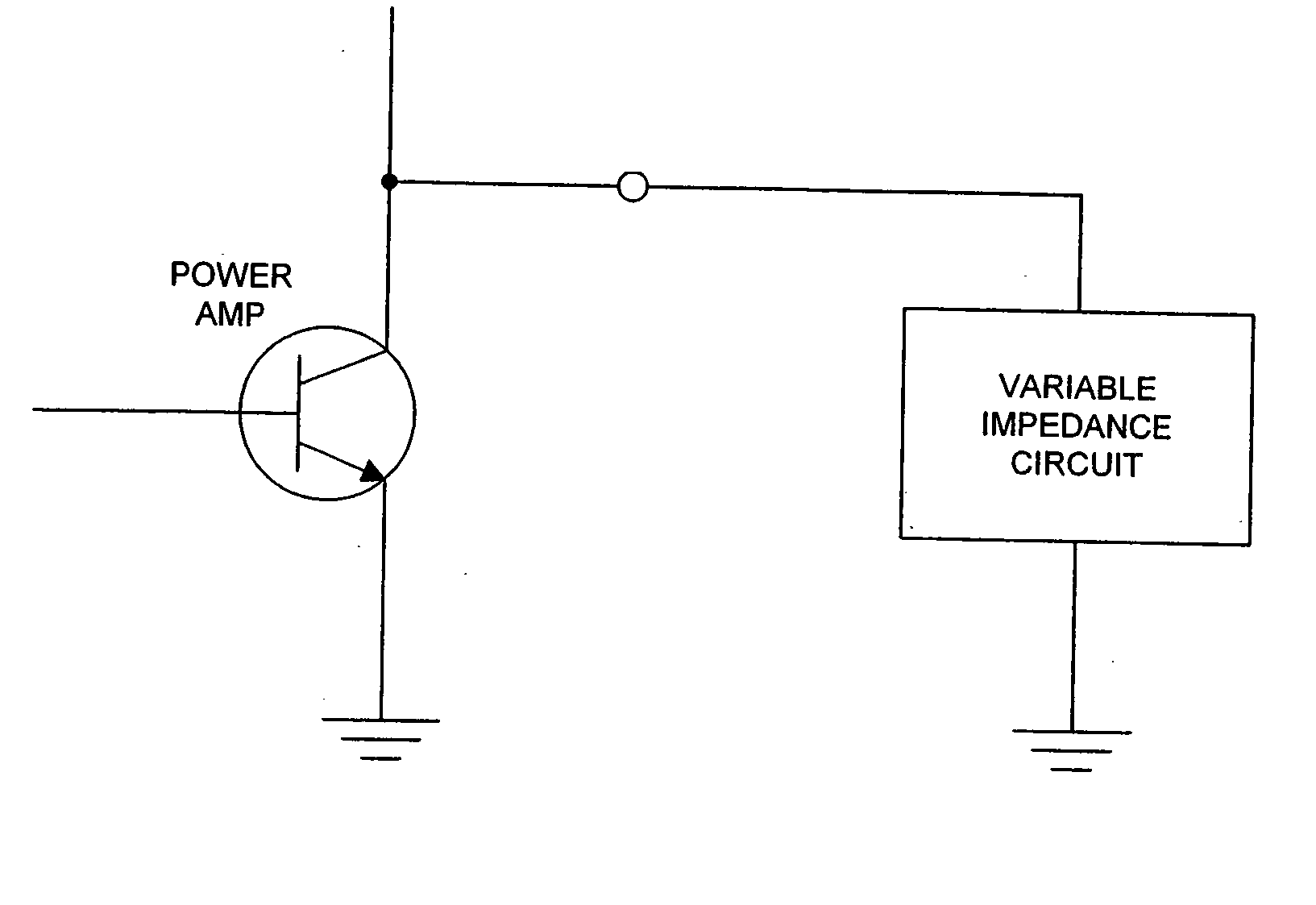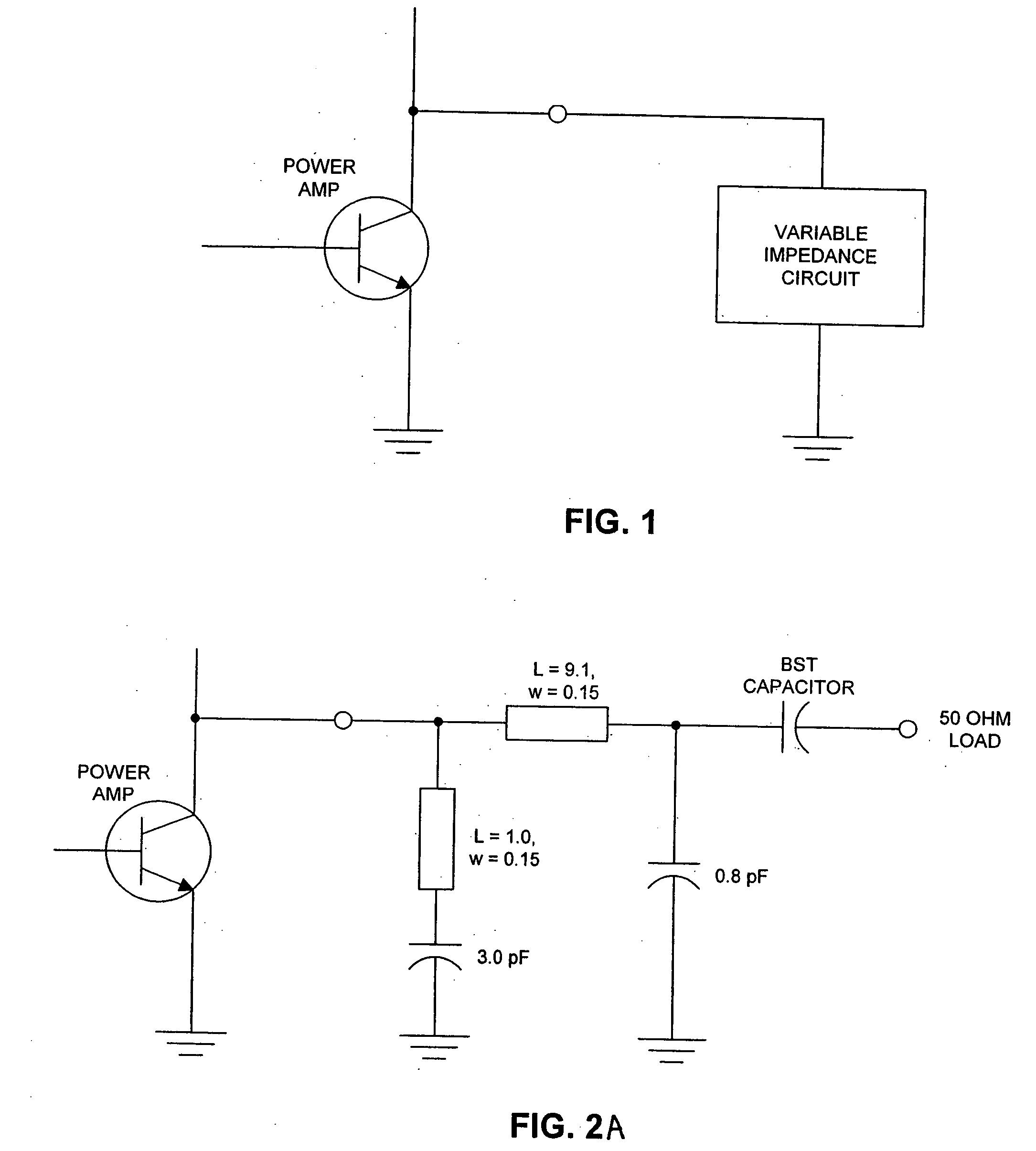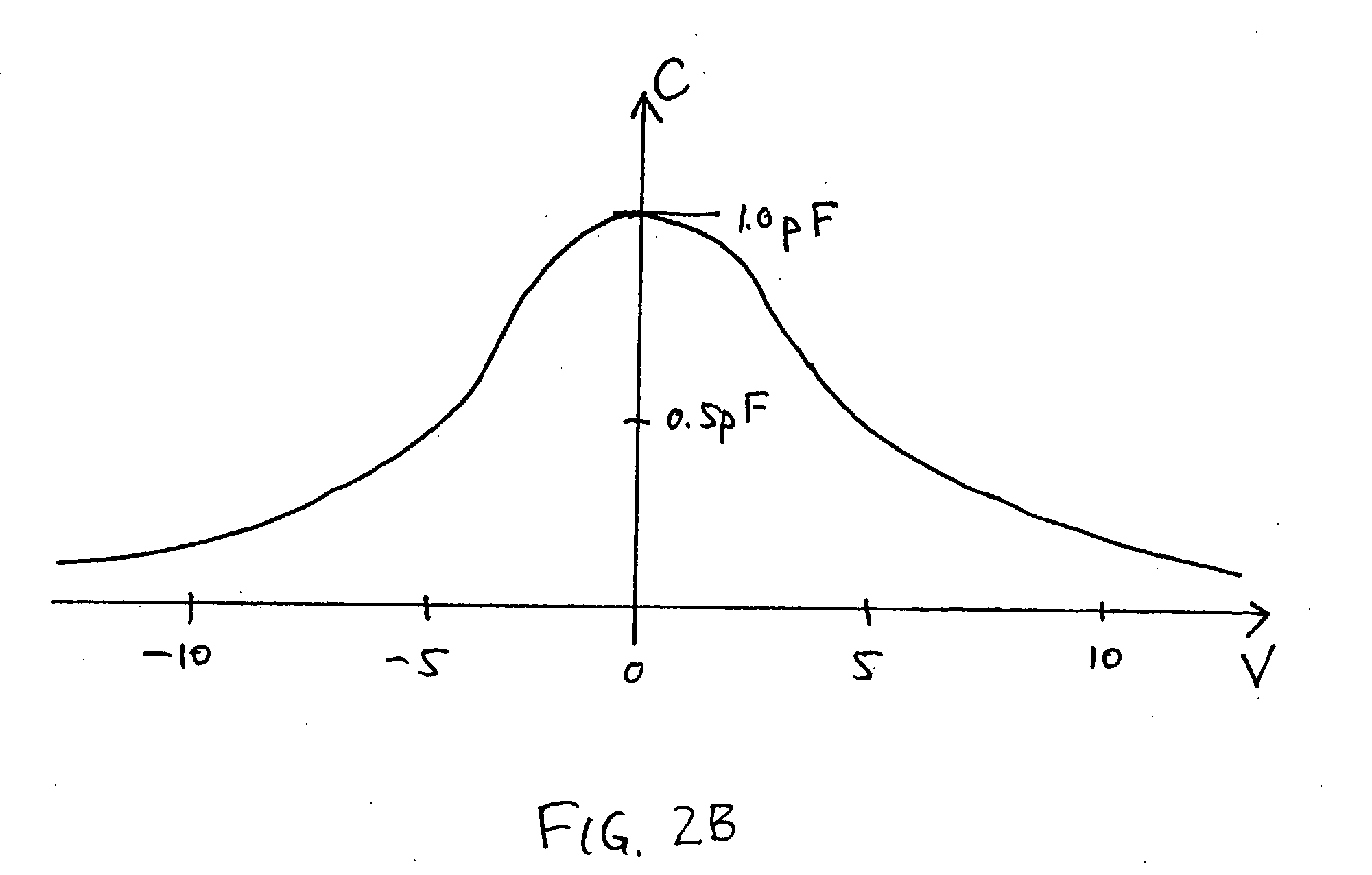Self-tuning variable impedance circuit for impedance matching of power amplifiers
a technology of impedance matching and variable impedance, which is applied in the direction of amplifiers with semiconductor devices/discharge tubes, gain control, transmission, etc., can solve the problems of less than optimal efficiency at lower power, inability to straightforwardly reduce the consumption of amplifiers, and add complexity, so as to reduce the capacitance of voltage-variable capacitors and increase the power efficiency. , the effect of reducing the impedance of the impedance matching circui
- Summary
- Abstract
- Description
- Claims
- Application Information
AI Technical Summary
Benefits of technology
Problems solved by technology
Method used
Image
Examples
Embodiment Construction
[0026]FIG. 1 shows a power amplifier coupled to a variable impedance circuit that is used for impedance matching the power amplifier. The impedance matching circuit includes a self-tuning voltage-variable capacitor. As a result, the impedance of the circuit is variable and self-tunes, as described below, to match the power amplifier.
[0027] The power applied across the capacitor induces a change in the capacitance of the voltage-variable capacitor. The impedance matching circuit is designed so that, when the power amplifier has a high output power, the voltage-variable capacitor has a capacitance that makes the overall impedance of the circuit low, thus matching the power amplifier. When the power amplifier has a low output power, the voltage-variable capacitor has a capacitance that results in high overall impedance for the circuit, again matching the power amplifier. As the output power of the amplifier varies between low and high, the capacitance automatically varies in a corresp...
PUM
 Login to View More
Login to View More Abstract
Description
Claims
Application Information
 Login to View More
Login to View More - R&D
- Intellectual Property
- Life Sciences
- Materials
- Tech Scout
- Unparalleled Data Quality
- Higher Quality Content
- 60% Fewer Hallucinations
Browse by: Latest US Patents, China's latest patents, Technical Efficacy Thesaurus, Application Domain, Technology Topic, Popular Technical Reports.
© 2025 PatSnap. All rights reserved.Legal|Privacy policy|Modern Slavery Act Transparency Statement|Sitemap|About US| Contact US: help@patsnap.com



